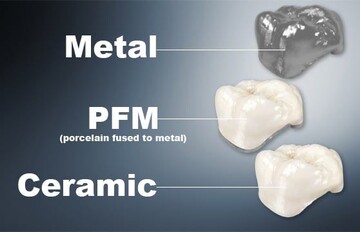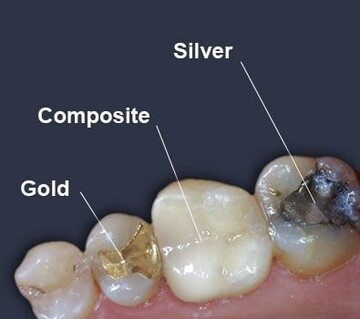Restorative
The most conservative approach when attempting to replace a missing tooth is a bonded bridge. It is also often referred to as a Marilyn Bridge. An impression of the area is taken and a new tooth referred to as a pontic is formed. Attached to the pontic on either side are abutments or “wings†that will support the pontic. The most common type of Marilyn Bridge uses abutments that are cemented on the backside of the adjoining teeth and hold the pontic in place where the missing tooth used to be. The adjacent teeth may need to be slightly modified to accept the “wings†of the pontic. The advantage of this type of procedure is that you are not having to put full coverage crowns on the adjoining teeth.
If your smile is in need of a makeover, crowns can provide predictable results. Crowns can give an unattractive tooth back its beautiful shape and color. For smaller or worn down teeth, a crown can restore the natural size of the old tooth. A crown can replace either part of or the tooth's entire structure. For procedures requiring only the areas visible from the outside, a veneer may be an alternative option.
Crowns are used to restore a tooth to its natural size, shape and color after a large filling or crack in the tooth has compromised the tooth. Crowns are almost always placed after a root canal treatment because the tooth becomes weak and is likely to fracture. A crown will strengthen and protect what remains of the tooth and will improve your smile. Crowns are often made of all ceramic material and in some cases can be made in a single visit.
In order for the crown to be placed on the tooth, 1-2mm of the tooth must be taken away and an impression must be made of the tooth. If the office has the ability to make crowns in a day, it will be made and placed on your tooth in the same visit, otherwise the impression is sent to a lab and your crown is fabricated there. If you have to wait on your crown, a temporary is placed on your tooth and will be replaced with your crown when it arrives. When the crown is placed on your tooth, sometimes it needs to be adjusted a little to make the proper fit. After it is adjusted it is cemented to your tooth and is a permanent solution.
A bridge may be used to replace a single tooth. A bridge consists of both a false tooth, called a pontic and the anchors (abutment crowns) that support the pontic. The entire structure spans the space vacated by the missing tooth.
Neighboring tooth structure is removed, shaping them to receive an anchor crown. An impression is then taken and sent to a dental lab where they fabricate the bridge.
The structure part of the bridge is created with a strong metal alloy that can handle the anticipated stresses.
Tooth-like porcelain is then fused to the structure. Once the bridge is tested for a correct fit, the anchor crowns are cemented to the neighboring teeth.
An inlay or onlay is a method of repairing a tooth that is somewhere between a filling and a crown. They are used when the tooth is unable to support a filling, but is not damaged to the point that it needs a crown. An inlay is much like a filling but is inserted into the ridges (cusps) of the chewing surface. An onlay is a little more extensive than an inlay and covers multiple cusps of the tooth. Inlays and onlays are commonly made with ceramic or composite materials but can also be made of gold. They are very durable and can last a long time depending on the material used and how well the patient takes care of them with regular brushing, flossing and visits to the dentist.
With today’s advances in dentistry, there are several options when choosing a type of crown. The most common crown utilized in dentistry is referred to as a PFM or porcelain-fused to metal crown. For those that have sensitivities to metals or are worried about aesthetics, there are all porcelain crowns or crowns that are composed of a material called composite. There have been several advances in all porcelain crowns and some labs are now utilizing zirconia which is much stronger than a typical porcelain crown. Also, they still are making all metal crowns, which are typically gold, and are usually used on a molar or a back tooth. Of course all of these different options vary in durability, appearance and cost. Please contact our office for any further questions. We would be more than happy to find the crown that is right for you and your situation.
There are four different choices that you have when it comes to filling a cavity.
1. Composite Fillings - Natural tooth colored filling, bonds to the tooth to provide added security.
2. Silver Fillings - Inexpensive and strong amalgam based filling.
3. Gold Fillings - More attractive than silver and provide for a better fit.
4. Porcelain Fillings - Also called inlays; the most attractive and durable of the tooth colored choices.


